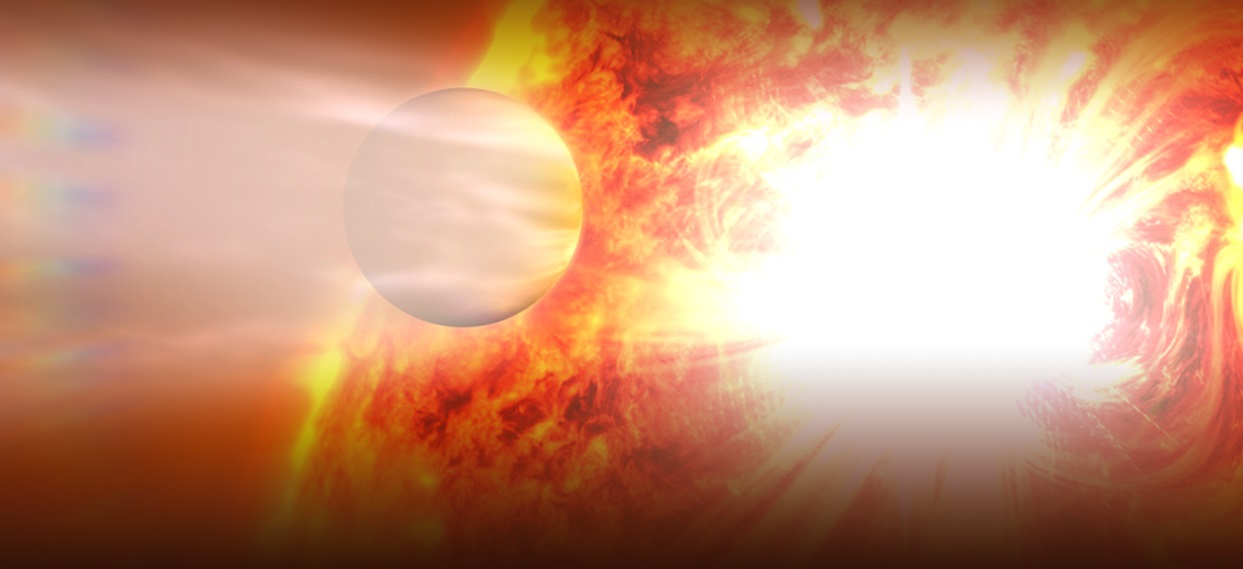

Early Tuesday morning, the 2019 Nobel Prize in Physics went to American cosmologist Jim Peebles for his “theoretical discoveries in physical cosmology,” and to Swiss scientists Michel Mayor and Didier Queloz for their discovery of an “exoplanet orbiting a solar-type star.”
The prize united two distinct fields of research—cosmology and astronomy—on the basis of the shared guiding principle of better understanding the cosmos, according to the Nobel committee. Peebles’ work in cosmology has helped define our understanding of the origin and evolution of the universe, while Mayor and Queloz’s discoveries in astronomy have helped expand our understanding of Earth’s place within it.
Nobel committee member Ulf Danielsson began his explanation of Jim Peebles’ Nobel Prize-worthy research by referencing The Big Bang Theory‘s theme song, which gets at the basic gist of cosmology: “Our whole universe was in a hot, dense state / then nearly fourteen billion years ago expansion started.”
Peebles’ work led to the realization that only 5 percent of our universe is made of “orderly matter”—recognizable things like planets and stars. The remaining 95 percent is made up of dark matter and dark energy. Nobel committee member Danielsson compares the composition of the universe to a cup of coffee: Each is filled with mostly coffee (dark energy), along with a “fair amount” of cream (dark matter). The tiny sprinkling of sugar represents the orderly matter, otherwise known as everything we can see and touch and comprehend. “This [orderly matter] is what science has been all about for thousands of years,” said Danielsson, “up until now.”
Peebles has spent the last 50 years developing theoretical tools to uncover these dark components of the universe. He was one of the first scientists to recognize the importance of the Cosmic Microwave Background, an ancient radiation discovered in the mid-1960s that has since helped scientists discern the age, shape, and contents of the universe.
“Were it not for the theoretical discoveries of James Peebles,” said committee chairman Mat Larsson, “the wonderful high-precision measurements of this radiation over the last 20 years would have told us almost nothing.”
Peebles’ contributions to cosmology are largely theoretical. But as stated by Peebles in a news conference after the announcement, “theory, in any of the natural sciences, is empty without observation.” Mayor and Queloz, the Swiss astronomers who share the physics prize, are honored for their practical observation of the first exoplanet orbiting a star similar to our sun.
In October 1995, Mayor and Queloz spotted 51 Pegasi b, which was 50 light-years away, orbiting a sun-like star in the constellation Pegasus. They found that this new planet was shockingly unlike Earth: It’s 50 percent larger than Jupiter, has a surface temperature of 1800 degrees Fahrenheit, and orbits so close to its host star that a single “year” lasts only four Earth days.
Mayor and Queloz detected 51 Pegasi using Doppler spectroscopy. When a large planet orbits a star, the star responds to the planet’s gravity by moving in a small ellipse—from Earth, it looks like the star is wobbling back and forth. As the star shifts closer to Earth, its light appears a little bluer; as it moves away it appears a little redder. This effect is the result of our changing perception of light relative to our position.
More than 4,000 exoplanets have been found in the Milky Way since that 1995 discovery, introducing us to an amazingly diverse array of gas giants, massive Super-Earths, and inhospitable Neptunian worlds.

Mayor and Queloz’s research helped to give a “new perspective on our planetary home” and unofficially kick started the now-booming field of exoplanet research, Danielsson said. Of course, many other people helped pave the way: people like Dale Frail and Alex Wolszczan (who discovered the first pulsar-orbiting exoplanet in 1992), and Bruce Campbell, Gordon Walker, and Stephenson Yang (who theorized the existence of the exoplanet Gamma Cephei Ab back in 1988), to name just a few.
One common criticism of the Nobel Prize format is that it reinforces the myth of the “lone genius” scientist. Though the much-maligned “Rule of 3” stipulates a maximum of three awardees for each field, Peebles was quick to highlight that he was not alone in his work. “Always, from the beginning, I had colleagues,” he stated during the news conference. He drew specific attention to Soviet scientist Yakov Zeldovich, who made significant contributions to CMB signal interpretation. Another notable scientist who worked to chip away at the mysteries of dark matter and dark energy was Vera Rubin, who died several years ago. (Side note: While only three women have been awarded the physics prize, Jim Peebles is the sixth “James” to receive the honor.
Science is meant to be a heavily collaborative institution, and the joint award is meant to celebrate the interaction between theoretical and practical discoveries. As the committee explained: “This year’s Nobel Laureates in Physics painted a picture of a universe far stranger and more wonderful than we ever could have imagined.”
On Wednesday, the committee will award the Nobel Prize in Chemistry.